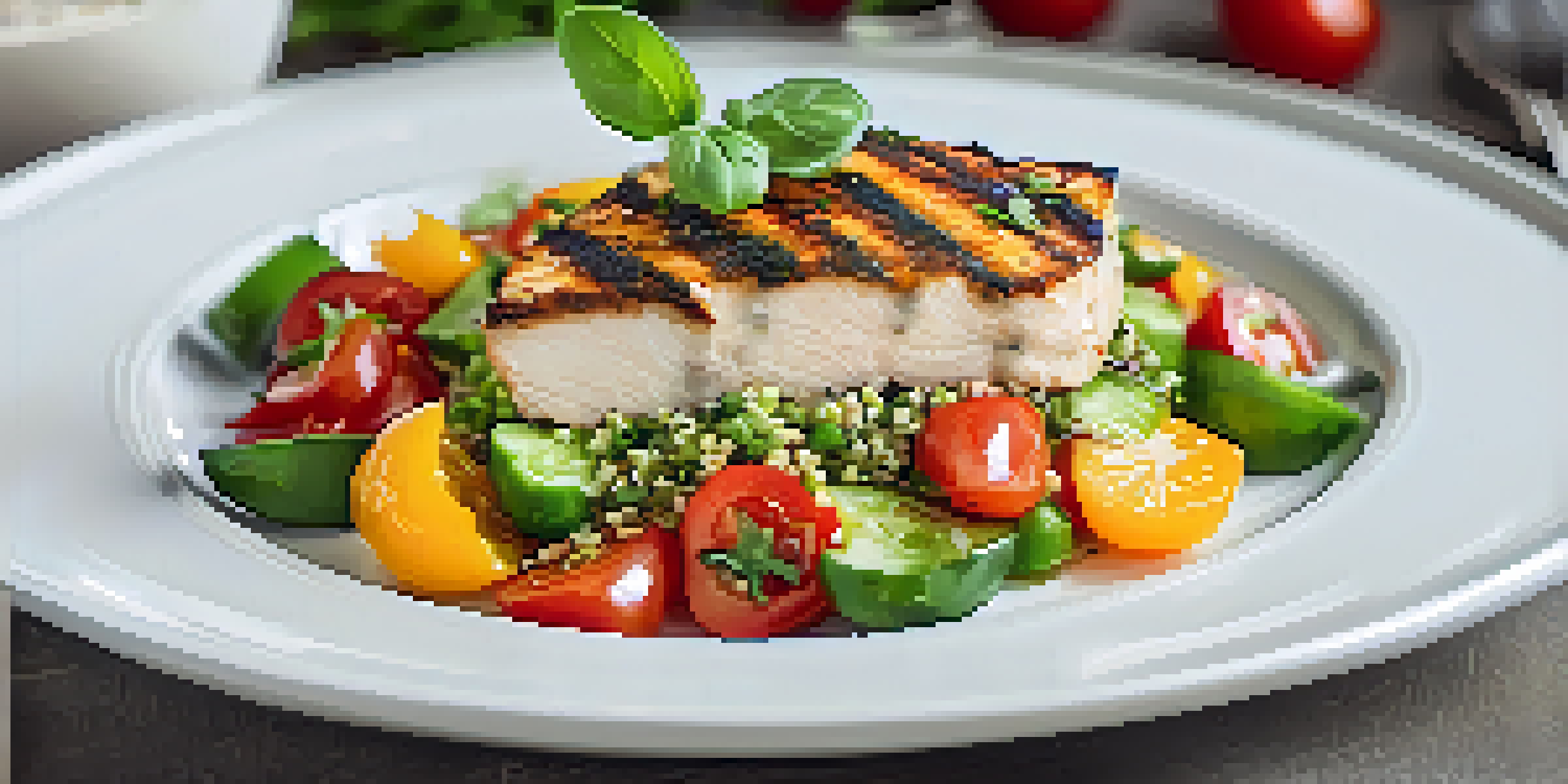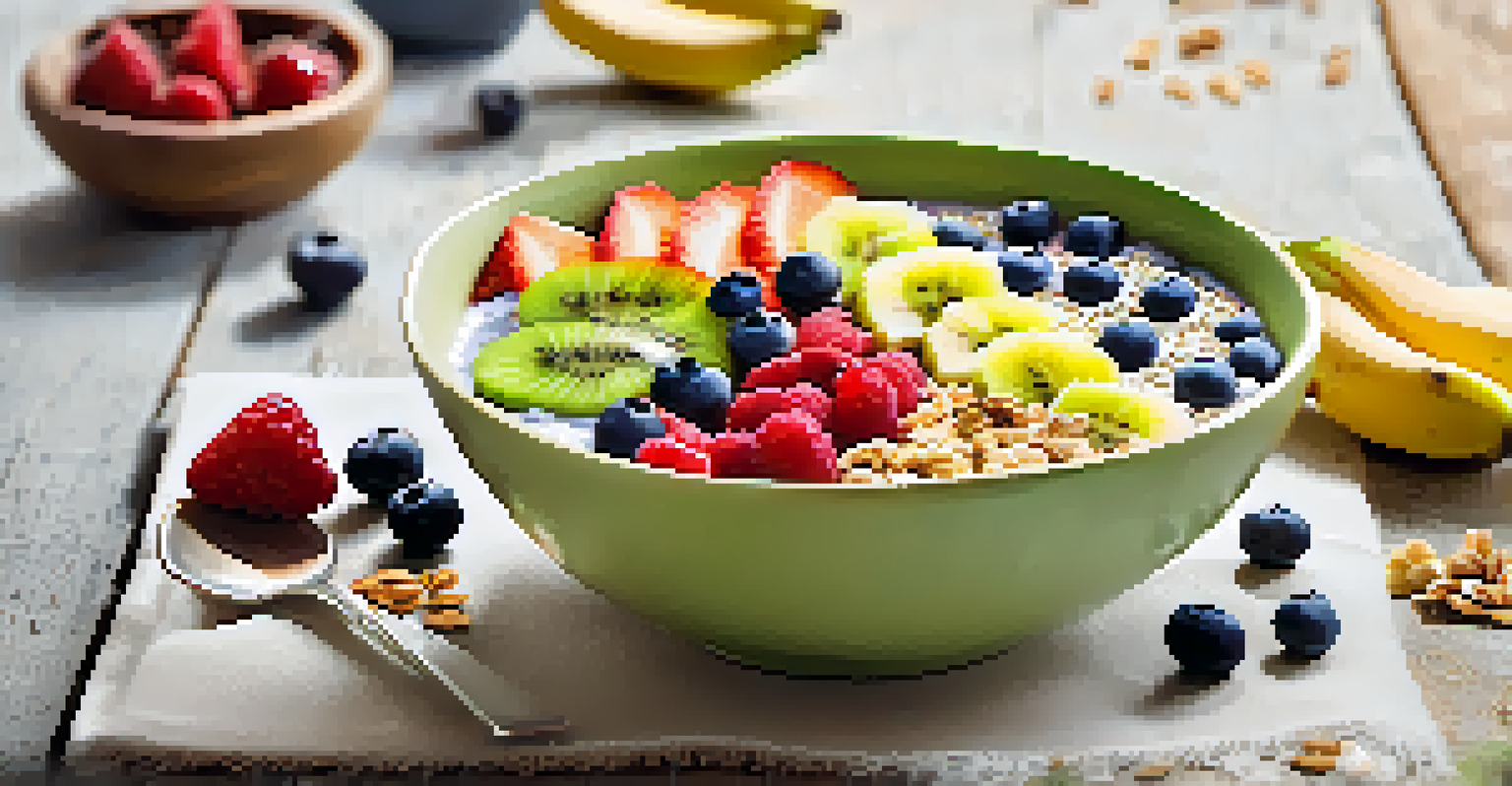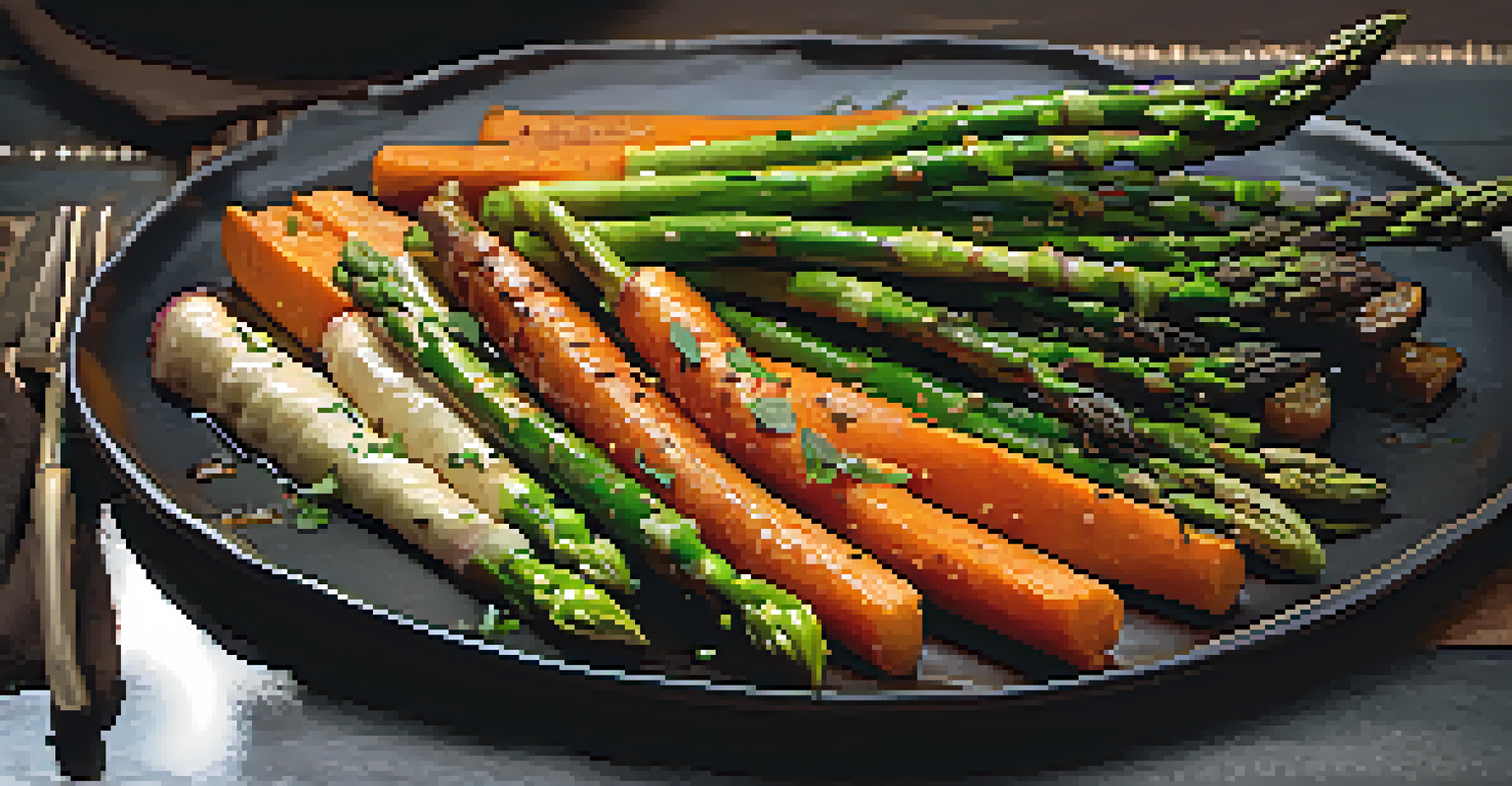The Art of Plating: Make Healthy Food Visually Appealing

Why Plating Matters: The Psychology of Presentation
Plating isn't just about making food look good; it's about enhancing the eating experience. When we see a beautifully arranged dish, our brains often signal that it will taste better, even before we take a bite. This psychological effect can be particularly influential when promoting healthy foods, as a well-plated dish can encourage us to enjoy nutritious options more.
You eat with your eyes first.
Imagine biting into a vibrant salad adorned with colorful vegetables and a drizzle of a rich dressing. The visual appeal not only whets your appetite but also highlights the freshness and quality of the ingredients. When healthy foods are presented attractively, they can become more inviting and less intimidating, especially for those who may shy away from greens or whole grains.
So, next time you're preparing a meal, remember that how you plate your food can change not only your perception but also your enjoyment. Investing a little time in presentation is a simple yet effective way to elevate your culinary creations.
Choosing the Right Plate: Size and Color Matter
The choice of plate can significantly impact how your food is perceived. A larger plate can make smaller portions look sparse, while a smaller plate can help create an illusion of abundance, which is especially useful for healthy meals. Opting for white or neutral-colored plates can also make colorful foods pop, enhancing their visual appeal.

Consider the colors of the food you're serving. For example, a bright green broccoli on a white plate immediately catches the eye, while a beige dish can appear bland. By choosing plates that contrast with your food, you can create a vibrant visual experience that draws attention and piques curiosity.
Plating Enhances Eating Experience
A well-presented dish not only looks appealing but can also improve the perceived taste and enjoyment of healthy foods.
In essence, the right plate sets the stage for your culinary masterpiece. Take some time to experiment with different sizes and colors to see what works best for your healthy dishes.
Building Height: Layers Add Dimension to Your Dish
One of the secrets to stunning plating is creating height. Instead of serving everything flat on the plate, try stacking or layering ingredients. For instance, a quinoa salad topped with grilled chicken and surrounded by colorful vegetables can offer depth and intrigue, making the dish more visually appealing.
The art of plating is not just about aesthetics; it’s about the experience of eating.
Height can be achieved through various techniques, such as using molds or rings to shape ingredients. This not only adds a professional touch but also invites your guests to dig in with excitement. When food is presented with dimension, it can transform a simple meal into a work of art.
Remember, height should be balanced with stability. Ensure that your layers are secure enough to avoid any spills, but don't shy away from getting creative. A little elevation can go a long way in making healthy food look enticing.
The Power of Color: Create a Vibrant Palette
Color plays a vital role in plating, as it not only enhances the visual appeal but also signifies the nutritional value of the meal. A rainbow of vegetables not only looks inviting but also indicates a variety of vitamins and minerals. Aim for a diverse palette to create a dish that is both beautiful and nutritious.
Consider the principles of color theory when plating. Complementary colors, such as green and red or yellow and purple, can create a striking effect. Using contrasting colors can highlight different components of the dish and guide the viewer's eye across the plate, making it more engaging.
Color and Texture Matter
Incorporating a variety of colors and textures in your dish can create visual interest and enhance the overall sensory experience.
Incorporating a variety of colors can also excite the palate. When we see vibrant dishes, our taste buds are often stimulated, enhancing our overall dining experience. So, don't hesitate to mix and match ingredients for a feast that’s as good for the eyes as it is for the body.
Garnishing: The Finishing Touches That Wow
Garnishing is the art of adding the final touches to your dish, and it can make all the difference. A sprig of fresh herbs, a sprinkle of seeds, or a drizzle of sauce can elevate your plating from ordinary to extraordinary. These small additions not only enhance the visual appeal but can also add layers of flavor to the dish.
When garnishing, remember to keep it relevant. Use ingredients that complement the main dish rather than distract from it. For example, a few basil leaves atop a tomato salad can enhance its freshness while providing a pop of color.
The key is to be thoughtful with your garnishes. A well-placed garnish can invite curiosity and encourage diners to explore different flavors in the meal. So, don’t forget to add that special touch to make your healthy meals shine.
Texture Matters: Create Contrast for a Sensory Experience
When plating, consider the textures of your ingredients as they play a crucial role in the overall experience. Combining crunchy elements with creamy ones can create a delightful contrast that excites the palate. For instance, pairing a crunch from roasted nuts with a smooth avocado puree can enhance both the visual and sensory appeal of your dish.
Textural contrast can also help draw attention to different components of the meal. By arranging ingredients with varying textures side by side, you can create a feast for the senses that invites exploration. Think about how each element feels in your mouth, as this can enhance overall enjoyment.
Portion Control Promotes Balance
Thoughtful portion sizes can make meals appear abundant while encouraging a balanced diet without overindulgence.
Incorporating a variety of textures can make a healthy dish more interesting and satisfying. So, mix and match crunchy, creamy, and chewy components for a well-rounded and engaging plate.
Serving Size: Balance and Portion Control in Plating
When it comes to plating, portion control is essential, especially for those mindful of their health. A well-plated dish should look abundant without being overwhelming. By carefully considering portion sizes, you can create a balanced plate that feels generous yet controlled.
Utilizing smaller portions of various foods can make the meal feel more satisfying without overindulging. For example, instead of serving a large scoop of rice, consider a smaller portion accompanied by a colorful assortment of vegetables and proteins. This not only looks appealing but also encourages a balanced diet.

Ultimately, the goal of healthy plating is to promote enjoyment of nutritious foods without compromising on satisfaction. By focusing on balance and portion sizes, you can create visually stunning meals that align with your health goals.